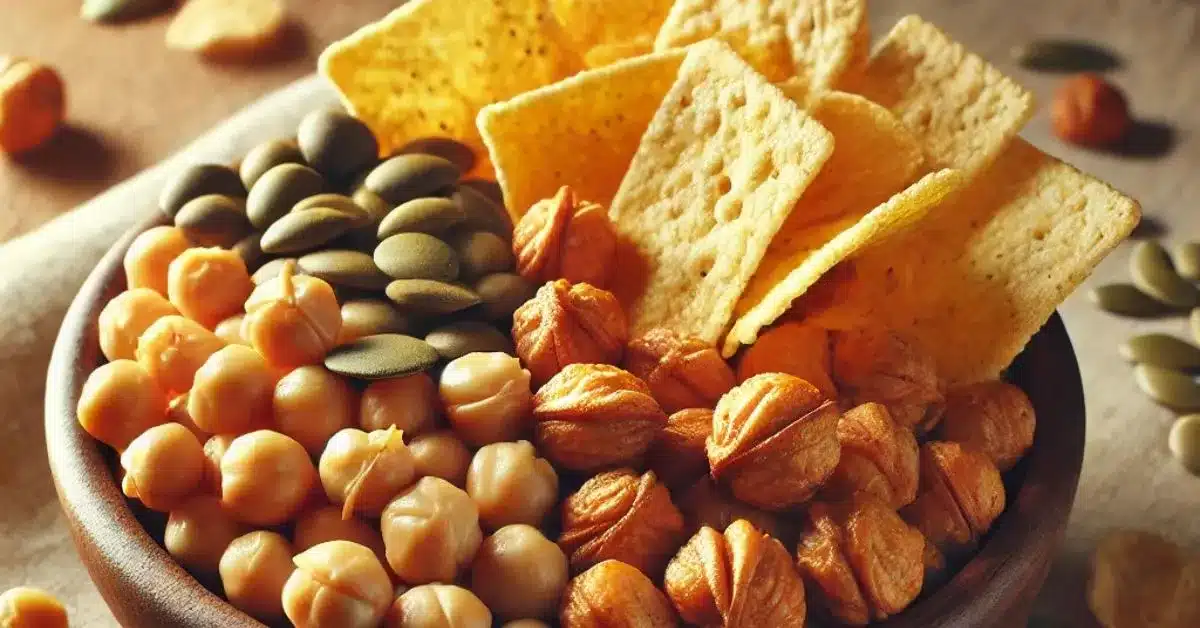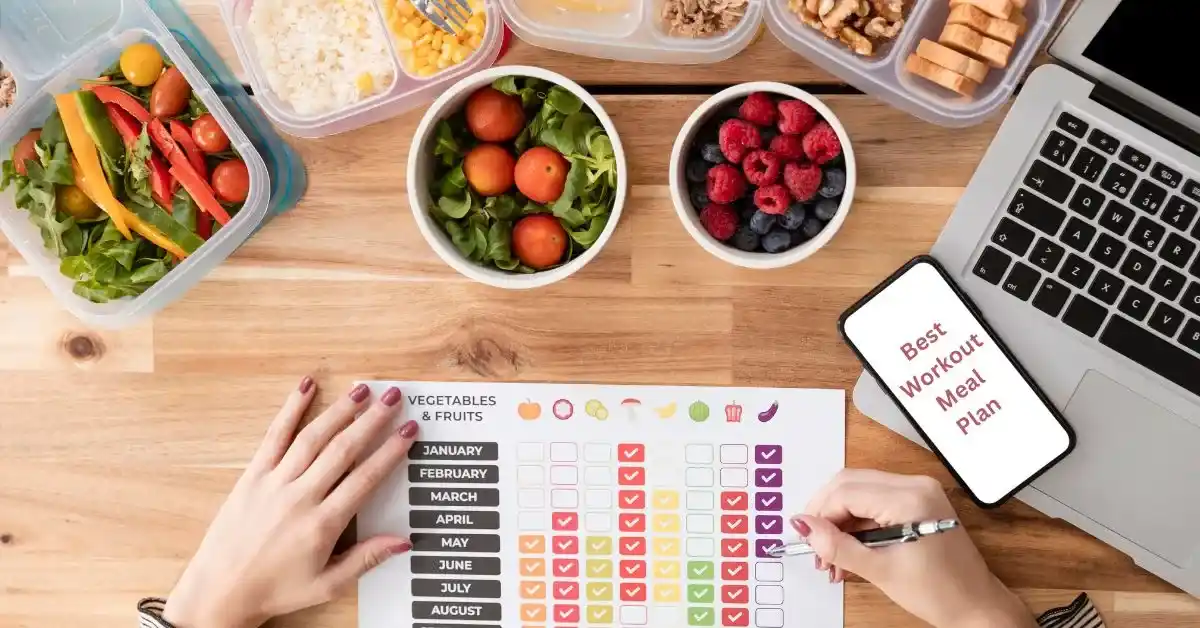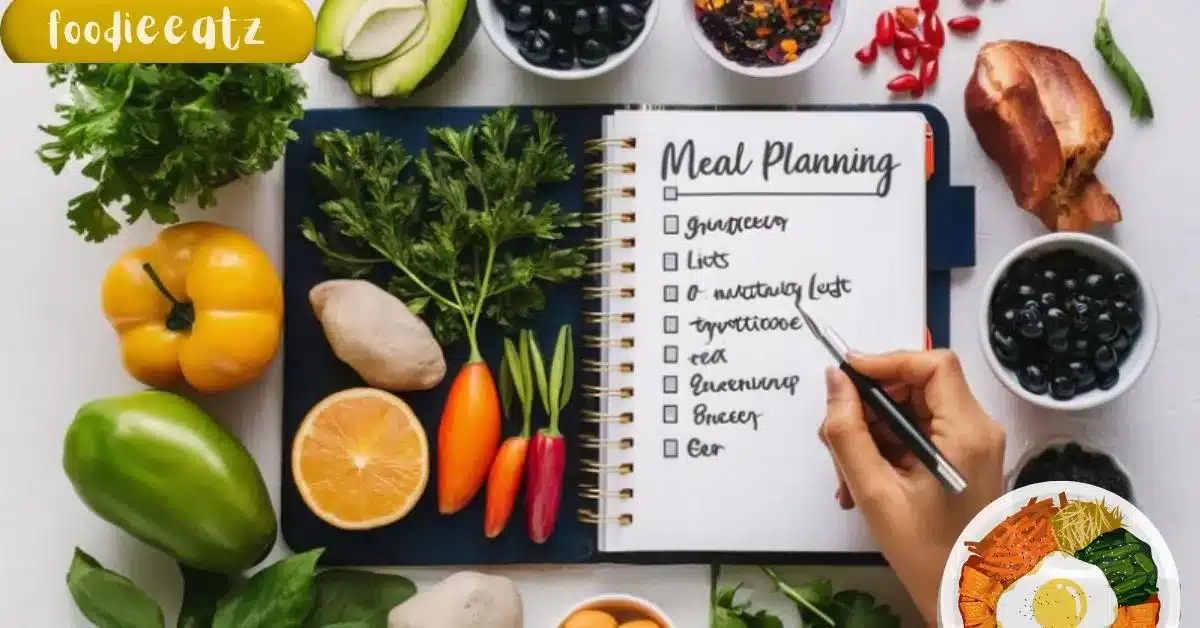Do you think about what does 120g of Protein look like? If you want a balanced diet, then you should know this. If you want to boost your health and fitness, you need to know the right amounts of protein.
Different people need different amounts of protein daily. If someone needs 100 grams of protein then another one can need 120 grams of protein. Choosing the right amount of protein will help you stay fit and healthy.
Key Takeaways
- Understanding what 120 grams of protein looks like is vital for a balanced diet.
- Knowing the right portion sizes for high-protein foods is crucial for health and fitness.
- You can achieve your daily protein goals by understanding what 120 grams of protein looks like.
- 120 grams of protein is a significant component of a daily diet.
- Visualizing 120 grams of protein helps in making informed food choices.
- Achieving the right amount of protein in your diet can be done with a little practice and patience.
Understanding Protein Measurements and Daily Requirements
If you want to know what 120 g of protein looks like, you should start knowing how to measure it. Usually, proteins are measured in grams. Knowing how to switch between these units is key for accurate measurements. For example, 120 g of protein is about 4.3 ounces.
When looking into how much is 120 g of protein, remember that daily needs change. Daily protein requirements depend on your age, sex, and how active you are. In General, Your body needs 0.8 grams per kilogram per day. But sportspeople like athletes or those who are very active might need more protein daily.
Converting Grams to Ounces
To change grams to ounces, use this simple rule: 1 ounce is about 28.35 grams. So, 120 g of protein is about 4.3 ounces.
Recommended Daily Protein Intake
The amount of protein you should eat daily varies a lot. For example, a woman who doesn’t exercise much might need 46 grams of protein a day. But, an athlete could need up to 170 grams. Knowing how much protein you need is important for your health.
Why 120g of Protein Matters
So why is 120 g of protein important a lot in everybody’s life? Protein helps in growing and repairing muscle, which is key to a healthy diet. The second benefit of this is it helps with weight control and feeling satisfied. These qualities make it important for your health.
| Age Group | Recommended Daily Protein Intake |
|---|---|
| Adults (19-50 years) | 0.8 grams/kg body weight |
| Athletes | 1.2-1.6 grams/kg body weight |
| Pregnant or breastfeeding women | 1.1 grams/kg body weight |
What Does 120G of Protein Look Like on Your Plate
If you are thinking of making a meal, then Knowing what 120 grams of protein looks like is key. It helps in covering your daily protein needs. It contains 4-6 ounces of fish, lean meat, or poultry. Or, it’s like 2-3 cups of legumes, such as beans, lentils, or peas.
Protein needs vary a lot. For instance, a 3-ounce chicken breast contains 26 grams of protein. There are 15 grams of protein in one cup of black beans. Below are some examples of 120 grams of protein in different foods:
- 4-6 ounces of grilled chicken breast
- 2-3 cups of cooked legumes, such as beans or lentils
- 1-2 cups of Greek yogurt
- 2-3 large eggs
Seeing 120 grams of protein looks like on your plate helps you make better diet choices. By eating a variety of protein-rich foods, you meet your daily protein needs. This keeps your diet balanced and supports your health and fitness goals.
Common Animal-Based Protein Sources and Their Portions
Understanding how much meat is 120 grams of protein is key or how much meat we eat to get 120 grams of protein daily. We need to know the portion sizes of animal-based proteins. Chicken, fish, dairy products, turkey, seafood, beef, pork, and eggs are the main sources of animal-based protein.
To figure out the protein in each, here are some guidelines:
- 3-4 ounces of cooked chicken or turkey has about 25-30 grams of protein.
- 3-4 ounces of cooked fish or seafood has about 20-25 grams of protein.
- 3-4 ounces of cooked beef or pork has about 25-30 grams of protein.
- 1 egg contains 6-7 grams of protein.
- 1 cup of milk or dairy products has about 8-9 grams of protein.
Chicken and Turkey Portions
Chicken and Turkey are popular protein sources. Their protein portion depends on cut and cooking methods. A 3-ounce serving of cooked chicken or turkey breast has 25-30 grams of protein.
Fish and Seafood Measurements
Fish and Seafood are rich in proteins. If you eat fish it means you get 20-25 grams of protein. Seafoods like shrimp, salmon, and tilapia are great protein sources.
Plant-Based Sources to Reach Your 120g Protein Goal
If you are a vegetable lover and want to fulfill your daily protein needs through plants. It’s key to know what 120g of protein look like from plants. Legumes, beans, lentils, tofu, and tempeh are top picks. They’re not just high in protein but also packed with fiber, vitamins, and minerals.
To get 120g of protein from plants, mix up your meals. Here are some ideas:
- Legumes: chickpeas, black beans, kidney beans
- Beans: lentils, cannellini beans, Great Northern beans
- Tofu and tempeh: marinated and baked, or added to stir-fries and salads
Once you know the protein in these foods you can easily plan a meal. For example, a cup of cooked lentils has about 18g of protein. A cup of cooked chickpeas has about 15g. Mixing these can help you hit your 120g of protein target.
With proper planning and creativity, you can get a diet full of protein. You can mix these plants and get 120 grams of protein a day. Always choose whole, unprocessed foods for the best nutrition.
| Food | Protein Content (per cup) |
|---|---|
| Lentils | 18g |
| Chickpeas | 15g |
| Black beans | 15g |
Visual Guide to Protein-Rich Meal Combinations
If you want to know what 120 grams of protein looks like, it is necessary to explore meal combinations. You can hit your daily protein needs by using these meal combinations. You can think about mixing different protein-rich foods.
You can face difficulty in getting 120 grams of protein a day. But with a clear guide, you can get your daily protein needs easily. First, you find protein-rich foods and then learn to mix them and enjoy a healthy meal at the end.
Breakfast Options
- Eggs with whole-grain toast and avocado
- Greek yogurt with berries and nuts
- Smoothie bowl with protein powder, banana, and almond milk
Above mentioned breakfasts give you a lot of proteins to start your daily energetically. For instance, 2 eggs give 14 grams of proteins. A cup of Greek yogurt has 20 grams of protein.
Lunch Combinations
In the Lunch combination, you can eat protein-rich foods like chicken, tofu, and fish with whole grains and vegetables. A grilled chicken breast with quinoa and steamed veggies has about 40 grams of protein.
Dinner Portions
For dinner, you can try different meal combos like salmon with sweet potato and green beans, or lentil soup with whole grain bread. These contain rich protein to meet your daily protein needs.
Tools and Methods for Measuring Protein Content
Before making a plan for a meal you should know how to measure protein needs. In this way, you will know how much protein you need daily. To figure out what does 120 g of protein look like, you need the right tools. You can use kitchen scales and measuring cups to find out how much is 120 g of protein.
Kitchen Scales and Measuring Cups
Kitchen scales are usually used for measuring protein. These are used when cooking food or eating. You can also use measuring cups for foods like beans, lentils, and nuts.
Mobile Apps for Tracking
There are many apps available on the internet like MYFintnessPak and Lose it! that can help in measuring protein. They show you what does 120 g of protein look like in various foods.
Reading Nutrition Labels
Reading labels is another way to check how much is 120 g of protein in packaged foods. Look at the protein content per serving to meet your daily needs.
| Tool | Description |
|---|---|
| Kitchen Scales | Accurate measurement of protein content |
| Measuring Cups | Measurement of protein-rich foods |
| Mobile Apps | Tracking protein intake and nutrition information |
| Nutrition Labels | Determination of protein content in packaged foods |
Common Mistakes When Measuring Protein Portions
If you are trying to figure out what 120 grams of protein looks like it can be a little bit tricky. You might guess wrong and your thinking can lead you to an unbalanced diet. It is very important to know common mistakes in measuring protein.
One of the biggest mistakes is using the food without knowing how much protein is in it. For example, a chicken breast has 30-40 grams of protein. But if you measure it wrong, you might get a little or too much. It’s crucial to contact a reliable nutrition source for the right amount of protein.
Below are the common mistakes you can face during measuring.
- Not using a food scale to measure portions
- Not accounting for protein content in each food item
- Not considering the serving size of each food item
If you fix these mistakes you can get the right amount of protein in your diet. Remember, 120 grams of protein is a balanced meal with various protein-rich foods.
With practice and patience, you can measure protein portions well. This helps you reach your health and fitness goals. By making smart diet choices, you get the nutrients you need to perform well.
| Food Item | Protein Content (grams) |
|---|---|
| Chicken Breast | 30-40 |
| Salmon Fillet | 35-45 |
| Eggs | 6-7 |
Spreading 120g of Protein Throughout Your Day
Before using meat or any other food you should exact amount of protein in these foods. It helps a lot in getting 120 grams of protein a day. Knowing how much meat is 120 grams of protein helps a lot. You can mix different foods like lean meats, eggs, fish, and plant-based diets. These mixes help you meet your daily protein needs.
A healthy diet contains protein, carbs, and healthy fats. If You eat protein throughout the day it keeps you healthy. It helps you grow your muscles. You will get extra energy throughout the day.
Optimal Timing
When to eat protein, it all depends on you. But make sure to eat the right amount of protein, neither very little nor very much. You can eat protein-rich foods at breakfast, lunch, and dinner is the best time. Snacks are also good but eat it in between breakfast and lunch or lunch and dinner.
Portion Distribution
The best way to eat protein all day is to spread your protein intake during breakfast, lunch, and dinner. Set aim to eat protein 30-40 grams at meals and 10-20 at snacks. Divide your protein intake like this:
- 40 grams in Breakfast
- 10 grams in Snacks
- 40 grams in Lunch
- 30 grams in Dinner
Tips for Meeting Your Protein Goals Without Overeating
Before using meat or any other food you should exact amount of protein in these foods. It helps a lot in getting 120 grams of protein a day. Knowing how much meat is 120 grams of protein helps a lot. You can mix different foods like lean meats, eggs, fish, and plant-based diets. These mixes help you meet your daily protein needs.
A healthy diet contains protein, carbs, and healthy fats. If You eat protein throughout the day it keeps you healthy. It helps you grow your muscles. You will get extra energy throughout the day.
Optimal Timing
When to eat protein, it all depends on you. But make sure to eat the right amount of protein, neither very little nor very much. You can eat protein-rich foods at breakfast, lunch, and dinner is the best time. Snacks are also good but eat it in between breakfast and lunch or lunch and dinner.
Portion Distribution
The best way to eat protein all day is to spread your protein intake during breakfast, lunch, and dinner. Set aim to eat protein 30-40 grams at meals and 10-20 at snacks.
If you know how to spread protein in your diet then this can help you get better choices in diets. Choose a variety of foods like lean meats, fish, eggs, and plants. This way, you get all the nutrients you need.
Divide your protein intake like this:
- 40 grams in Breakfast
- 10 grams in Snacks
- 40 grams in Lunch
- 30 grams in Dinner
Tips for Meeting Your Protein Goals Without Overeating
If you want to meet your daily protein needs without overeating, it’s necessary to know what does 120 grams of protein look like in different food portions.
Getting 120 grams of protein can be tough. But with the right guidance and planning you can meet your needs easily without eating too many calories. Here are some tips to help you meet your protein goals:
- Eat protein-rich foods at every meal, such as lean meats, fish, eggs, and dairy products.
- Incorporate plant-based protein sources, like legumes, beans, and tofu, into your diet.
- Use a food scale or measuring cups to measure your food portions and track your protein intake.
By following these tips and understanding what does 120 grams of protein looks like, you can make sure you’re getting enough protein. Remember, 120 grams of protein is a lot. But, it’s doable with a balanced diet and a bit of planning.
Special Considerations for Different Dietary Needs
If you are an athlete, sportsman, trying to lose weight, or on a diet then you should know what 120 g of protein looks like. You need to find your protein needs and plan your meals according to them.
For athletes, protein helps in preparing and growing muscles. Your aim should be 1.2 – 1.6 grams of protein per kilogram of body each day. This helps you see how 120 grams of protein fits into your body. Those trying to lose weight should focus on portion control and balanced meals to meet their protein needs.
Athletic Requirements
- Consume 1.2-1.6 grams of protein per kilogram of body weight daily
- Focus on lean protein sources, such as chicken, fish, and eggs
- Aim to eat 20-30 grams of protein per meal to support muscle growth and repair
Weight Loss Goals
- Control portion sizes to maintain a calorie deficit
- Choose protein-rich foods, such as lean meats, legumes, and low-fat dairy
- Aim to eat 15-20 grams of protein per meal to support satiety and weight loss
Knowing your protein needs is crucial. Consider your athletic goals, weight loss aims, and dietary limits. This helps you figure out how much is 120 g of protein and plan your meals for health and fitness.
Conclusion: Making 120g of Protein Work for You
If you understand and know how to add 120 grams of protein to your daily diet, this can help you stay healthy. It helps you to get fitness goals. Knowing how to measure protein, finding good sources, and planning meals helps you fit it into your life.
Protein is vital for keeping muscles strong, boosting metabolism, and powering your body. It’s important for your health.
Whether you’re an athlete, trying to lose weight, or just want to feel better, hitting 120g of protein is doable. Use the tips and ideas from this article to meet your protein needs. This way, you can eat well without feeling too full or stuck to certain foods.
With some planning and the right info, you’re ready to start your protein journey. You’ll feel better and be healthier.
FAQ
What does 120 grams of protein look like?
120 grams of protein is a lot. It can be found in foods like 4 grilled chicken breasts or 6 ounces of salmon. You can also get it from 24 large eggs or 3 cups of cooked lentils.
How much is 120 grams of protein?
120 grams of protein is a big deal. It’s like 4 ounces of protein per meal, three times a day. This is good for athletes or anyone who wants to build muscle.
What does 120g of protein look like?
120 grams of protein looks like different foods. For example, it’s like 4 grilled chicken breasts or 6 ounces of salmon. It’s also like 24 large eggs or 3 cups of cooked lentils.
How much meat is 120 grams of protein?
120 grams of protein is about 4 ounces of lean meat. This can be chicken, turkey, or fish. You can also get it from 6 ounces of salmon, 3 cups of Greek yogurt, or 24 large eggs.
What does 120 grams of protein look like?
120 grams of protein looks like different foods. For example, it’s like 4 grilled chicken breasts or 6 ounces of salmon. It’s also like 24 large eggs or 3 cups of cooked lentils.
What does 120g of protein look like?
120 grams of protein looks like different foods. For example, it’s like 4 grilled chicken breasts or 6 ounces of salmon. It’s also like 24 large eggs or 3 cups of cooked lentils.







